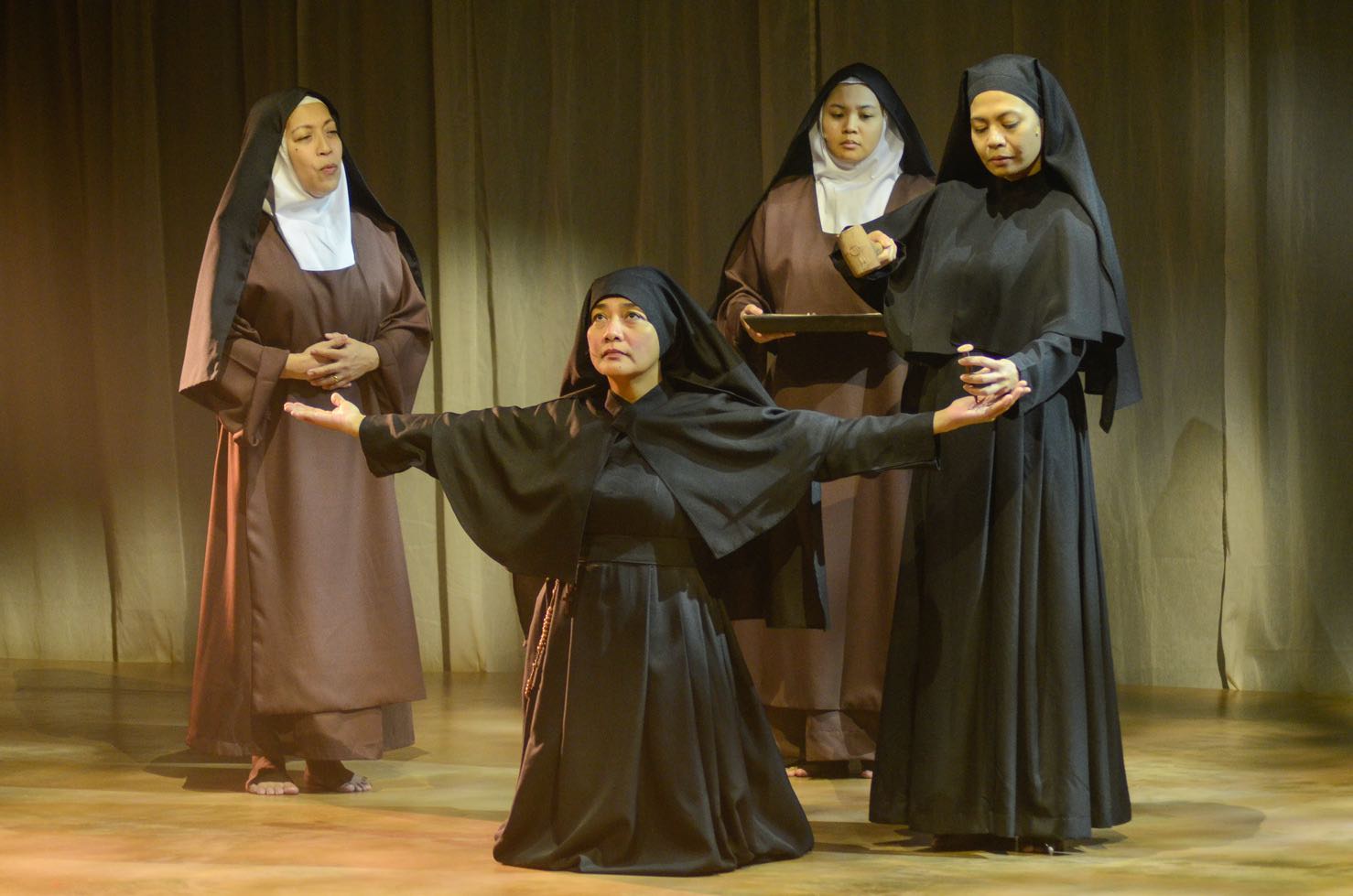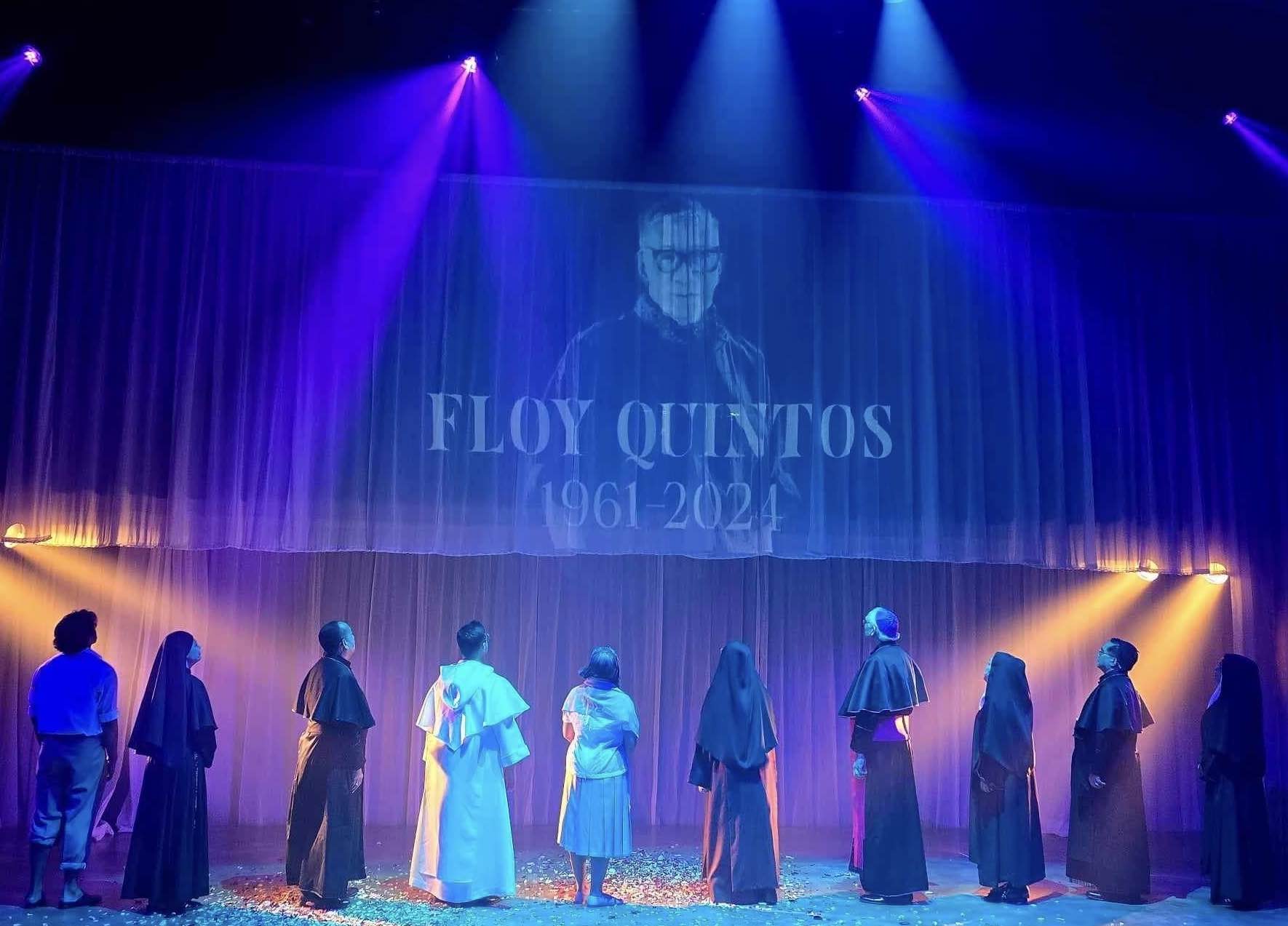REVIEW: 'GRACE' is Floy Quintos’ bravest, boldest work
Warning: This theater review contains spoilers from GRACE.
Don’t be misled by the title. GRACE is not the feel-good, ethereal, inspirational play its name suggests. This fictionalized account of the events surrounding the alleged Marian apparitions and petal showers from the sky in a Carmelite monastery in Lipa, Batangas in 1948 is thought-provoking, heart-rending, and discomforting, even disturbing. Whether you’re a believer in the reported miracles, a non-believer, or agnostic, the play will shake you and that’s exactly why it’s an essential and indelible watch.

Don’t know much about the real-life story? That may be for the better. Complete, concise, commanding, GRACE comes barrelling with the blunt force of a wrecking ball. It’s practically a full history lesson brought to riveting life onstage in a matter of three hours, replete with dates, news headlines, and archival images. Most importantly, crucially, it has a big gallery of incisively-written characters—all actual people—telling this tale like it has never been told before, up close and very personal.
At the center of it is Teresita Lat Castillo, the young novice whose claims of having visions of and receiving several messages from the Blessed Mother for 15 consecutive days in September 1948, just two months after entering the monastery, sent the entire country into a religious frenzy for the next three years. It died like a flame being doused with water when the Vatican, acting upon the findings of an investigation by a council of Filipino priests under the supervision of Monsignor Vagnozzi, papal representative from Rome, declared the Marian apparitions and the subsequent petal showers that the nuns and thousands of lay people experienced “not of supernatural nature.” In short, a hoax.

GRACE playwright, the late Floy Quintos, said he based his script on several published documents, notably Teresita’s memoir titled I Am Mary, Mediatrix of All Grace and the journal of Father Angel de Blas, the Filipino-Italian Dominican priest from UST who, as the primary investigator of the Lipa phenomenon, extensively interviewed Sister Teresita.
Quintos’ sleight-of-hand brilliance is how he wove the factual and the fictional, the narrational and the dramatic, the informational and the emotional together so seamlessly you won’t be able to tell where one ends and the other begins. This gives the entire piece the heady push-pull dynamic of exteriority and interiority.
The play is particularly singular in putting its audience this close to this largely forgotten piece of history—it makes you feel like a voyeur into something you aren’t supposed to have any access to. And like anyone who finds themselves in that spot, the experience gives both pleasure and discomfort—pleasure from the privilege, discomfort from the feeling of being a trespasser. This is most marked when, towards the end of the show, it’s revealed that the Church, acting upon the Vatican’s negative decree, ordered everything related to the alleged apparitions and petal showers—pieces of evidence, documents, even the very statue of the Mediatrix of All Grace that the nuns had made and which they paid for using voluntary donations from lay people—destroyed immediately. “It’s a complete erasure of history,” Quintos said in one of the last media interviews he gave, in March this year, before his unexpected passing in late April.

GRACE is a magnificent swan song for Quintos whose theater career was littered with acclaimed award-winners. He particularly thrived in history, finding rich material and fashioning brilliant pieces that were layered, insightful, and challenging works even as they were thoroughly entertaining. Throughout his career, he tackled themes about power and authority and the subjects and objects of Filipinos’ faith and trust. In Sour Clara, his bold reimagining of Maria Clara, he toyed with sexual power plays. In one of his first plays, St. Louis Loves Dem Filipinos, about the 1904 World Expo in the U.S. where members of Philippine tribes like the Igorots were exhibited, he dealt with cultural and race politics. In The Reconciliation Dinner, his previous work, he explored the great social divide of the 2022 national elections.
GRACE is probably Quintos’ bravest, boldest work, not just for the sheer amount of research it demanded—and, in fact, it took him eight years to develop—but, more importantly, for taking on a still-raging controversy involving the Catholic Church, putting the spotlight in particular on the politics inside the powerful institution. The effort to be balanced and fair, a hallmark of Quintos’ works, is apparent: The script explicitly says that “it was a different time,” referring to the story’s milieu. But while it takes pains in explaining, or at least offering possible explanations for key developments and decisions in the Lipa story, particularly those from the Church hierarchy, it’s clear where his sympathy and indignation lay.
Quintos and Santos are served excellently well by the entire ensemble cast, each playing narrator, character, and commentator throughout the play. It’s led by a sublime Leo Rialp, towering literally onstage at six-foot-tall and figuratively with his deliciously subdued portrayal of the vainglorious Mosignor Vagnozzi; a commanding Shamaine Centenera-Buencamino who plays the no-nonse and firm Mother Superior Sister Cecilia with burnished grandeur especially when the character faces an unjust extreme debasement; a terrific Nelsito Gomez as the conflicted priest investigator Father de Blas; a scene-stealing Frances Makil-Ignacio as a wisecracking nun; and a soulful Stella Cañete-Mendoza in the role of Sister Teresita, most impressive and affecting in the investigation scenes where she runs a gamut of emotions—anxiety, fear, disappointment, anger, hopefulness, sadness, regret, anguish, joy—with aplomb. She and Gomez are dynamite together in this section of the play.

So is the entire show amazing GRACE? For sure. But it’s a raging knockout kind of amazing, and that’s what makes it different, unexpected, and unforgettable. It will stay with you long after you’ve left the theater.
GRACE runs on Sundays and Saturdays from May 25 to June 16 at the Power Mac Center Spotlight Blackbox Theater in Ayala Circuit Mall in Makati. Tickets are available online at ticket2me.net from P1,500 to P2,000.
Editor's Note: The author is one of the official show buyers of GRACE.


